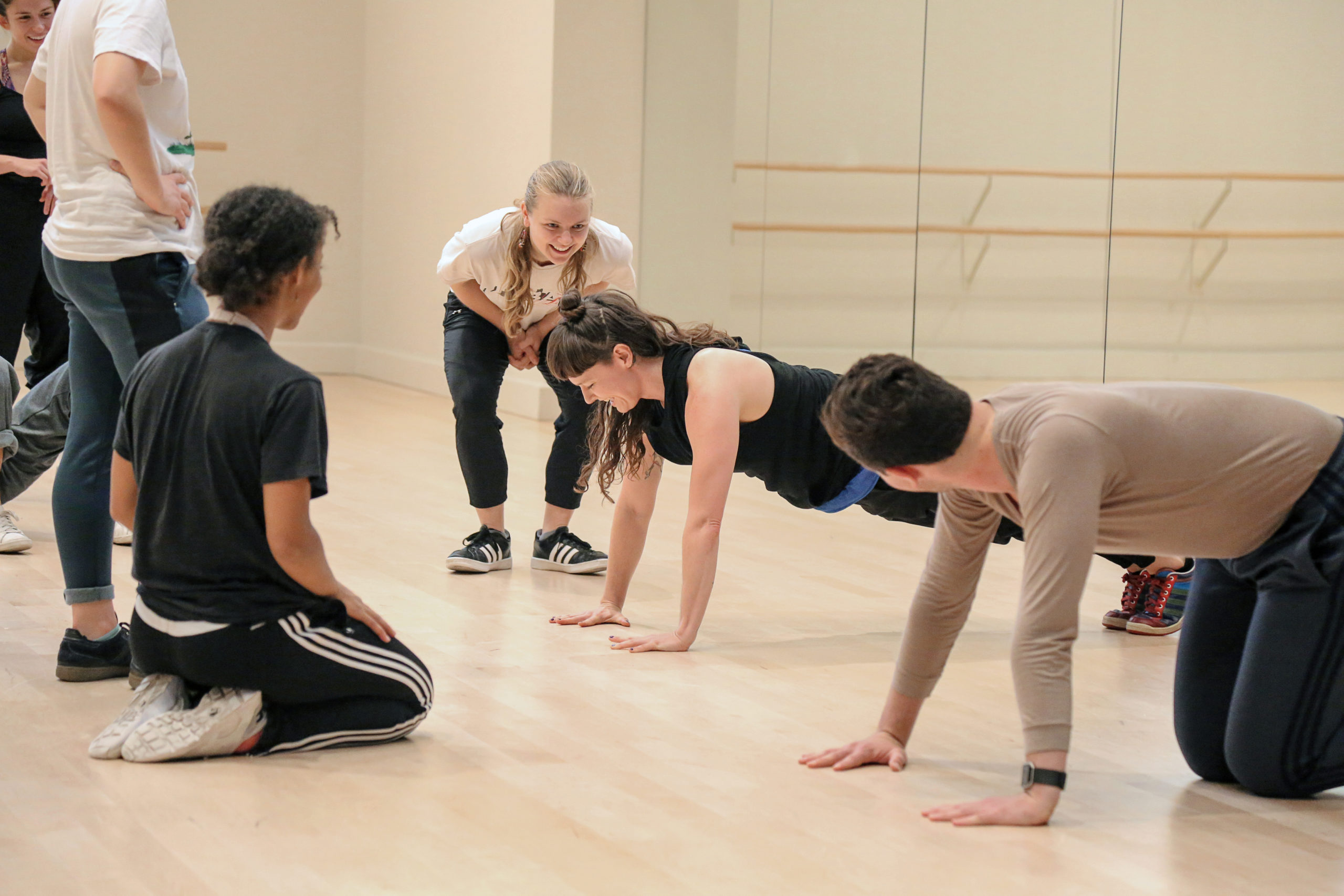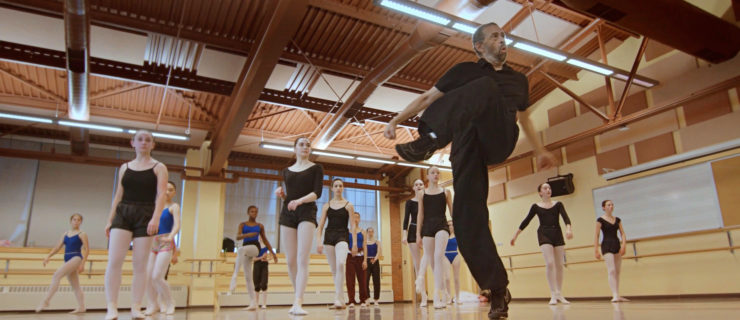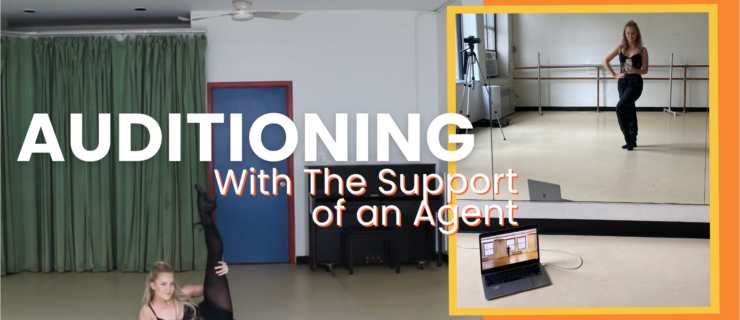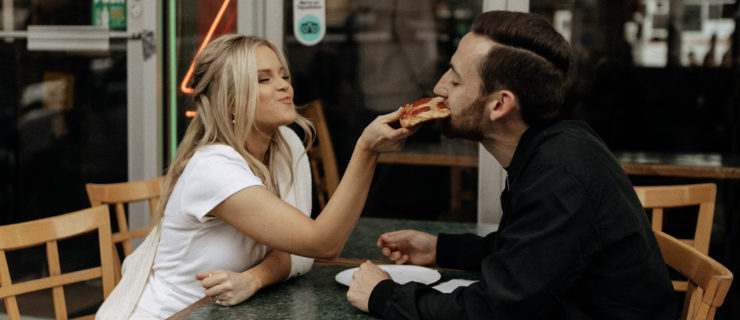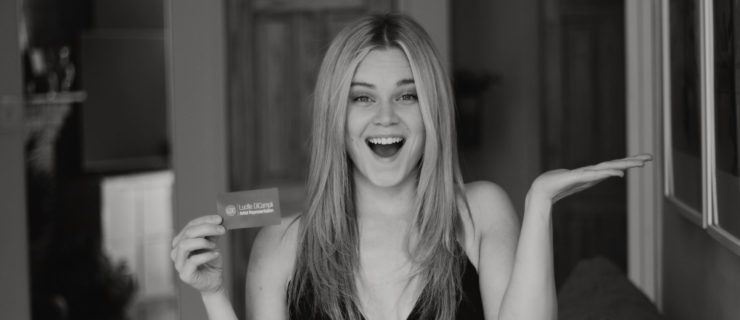How to Cultivate Improvisation Skills and Live in the Moment
When Barbara Duffy was a young professional dancer in the American Tap Dance Orchestra, director Brenda Bufalino would have performers improvise onstage during certain pieces. “For a long time, I would just choreograph my improv,” says Duffy. “It was cheating!” Duffy was afraid of improvising, but “something inside me really wanted that freedom. I finally realized it wasn’t about my skill as a dancer. It was what was going on in my head, what I was saying to myself.”
Today, Duffy has written a book about improvisation, Tap Into Improv, and has taken her signature improv-for-tap-dancers class all over the world. The lesson: Improvisation is a skill that can be learned, and it’s one that is becoming increasingly crucial for dancers in nearly any style.
Rethink Improv
Improvisation doesn’t have to be scary: Dr. Susanne Ravn, who studies dance improvisation at the University of Southern Denmark, suggests reframing how you think about it:
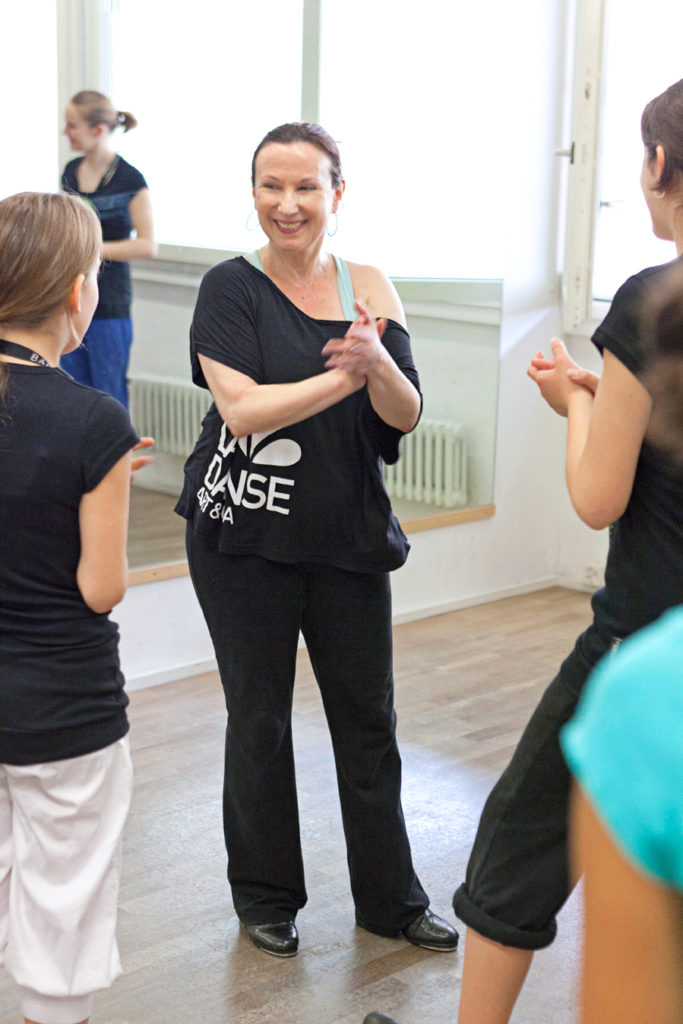
- It Isn’t Just Making It Up as You Go Along
We often think of improvisation as movement that happens spontaneously. In Ravn’s research, “that’s definitely not true. There’s always some planning or preparation before the improvisation takes place.” She says that skilled improvisers don’t just start improvising out of the blue; they might have specific ideas about improvisation or different topics they want to explore. She also says that while our conception of improvisation places the movement’s intentionality solely with the dancer, that’s not really the case either: Dancers are highly influenced by their settings and the people around them. “There’s something about moving with others where there’s a contagious effect,” she says. She suggests dancers embrace what is offered to them in the space, whether that means allowing yourself to be inspired by someone else’s movement quality or interacting with the architecture. - There’s Always Context and Expectations
There’s sometimes a myth that dancers can truly move however they want while improvising. That is almost never the case, Ravn says: There is usually a context and an implicit expectation that will inform the movement. For instance, a dancer performing traditional ballet steps at a contemporary improv jam may make up movement on the spot, and in that sense improvise, but she likely won’t appear to be improvising within that context. Knowing the expectations can help dancers narrow down the movement options available to them, which can make the task feel less overwhelming. - All Dance Is Improv
Ravn suggests that dancers think of all dance as having some element of improvisation. Even the most tightly choreographed pieces leave room for a dancer’s interpretation, and won’t look exactly the same every time they’re performed. “Any kind of dance performance comes with a certain kind of openness,” she says. This mindset can make what we traditionally think of as improvisation less intimidating—after all, you do it every time you dance.
The Improviser’s Toolbox
Set a Framework.
In many settings, you’ll be given a task or exercise to help direct your improvisation. If you aren’t, make something up for yourself, suggests Ravn. Some of Duffy’s favorite exercises include taking certain foundational steps away from students (like shuffles and brushes), so they can get out of their comfort zones or requiring them to move continuously throughout the room.
Discover what resonates most with you. Amy O’Neal, who teaches hip hop, contemporary, improvisation and other subjects at the USC Glorya Kaufman School of Dance, experiments with sensation-based prompts (like embodying the texture of a particular instrument in music) and intellectual prompts (like initiating from different body parts sequentially).
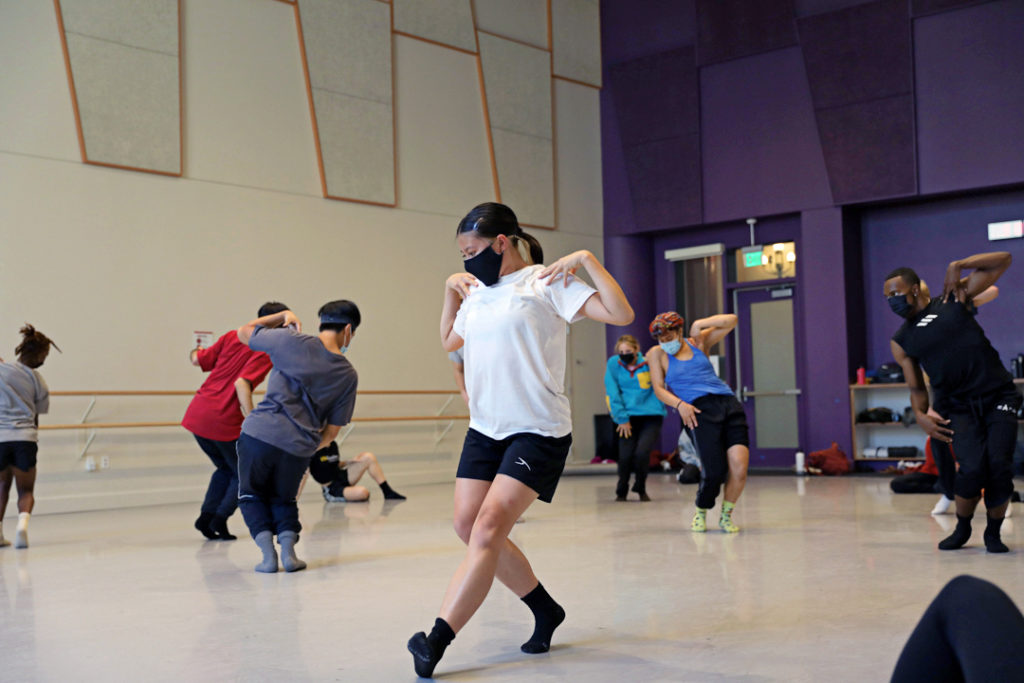
Acknowledge Your Habits.
“Break your habits” is a common refrain in improvisational circles, and it can be a helpful way to think about improv. But it can also feel stifling. Duffy, for instance, used to beat herself up for doing the same steps over and over again. When she started to think about them differently—as steps she repeated because she loved them and was good at them—and allowed herself to do them without judgment, she found that her improvisation opened up, and she relied on those steps less and less. If the idea of breaking your habits feels too restrictive, try just noticing and exploring them.
Play.
Moncell Durden, who explores improv in his hip-hop, house and jazz classes at USC Kaufman, has an improv acronym: Intuitive Meditation Playfully Revealing Objective Variables. The “Playfully” part is particularly important for him: “I want to play in the sense that a 5-year-old plays,” he says. “What colors are going on? What sound? What is this character? And to realize the depth of the narrative you’re creating, the world you’re creating, and to venture into whatever that is.”
Face Your Fears.
Duffy starts many of her improv classes by asking students: “What is your biggest fear about improvising?” A common answer for tap dancers: Being out of time with the music. To help them overcome this fear, Duffy will tell them to try to dance off-time, and often they realize it’s hard for them to do. “It gives them the confidence not to worry about that so much,” she says. O’Neal does a similar exercise when her adult dancers express the fear of looking stupid: “What do you even think a stupid move looks like? Let’s all just move in a way that we think looks stupid. Let’s face it and reevaluate.”
Why Learn to Improv?
“There are endless professional and personal benefits to being able to improvise,” says Amy O’Neal, who teaches at the USC Glorya Kaufman School of Dance. “What if you are injured—how can you still explore your body in a safe way or create in those circumstances? What if you have to improvise at an audition? What if something happens in a live performance that is out of your control? Improvisation is also therapeutic; it is a space to learn about yourself and to release or move through di cult emotions.”
TEACHERS: For tips on helping your students improve their improvisations, visit dance-teacher.com.
